Warband. "Dogs-knights" on the roads of war
Not having achieved great success in the war with the Saracens, the Teutonic Order gained gloomy glory in Europe, and the word “Teuton” itself is often used now to designate a rough and stupid martinet. In general, the "knight dogs" - and the point. Why exactly did the Teutonic Order have such a fate?
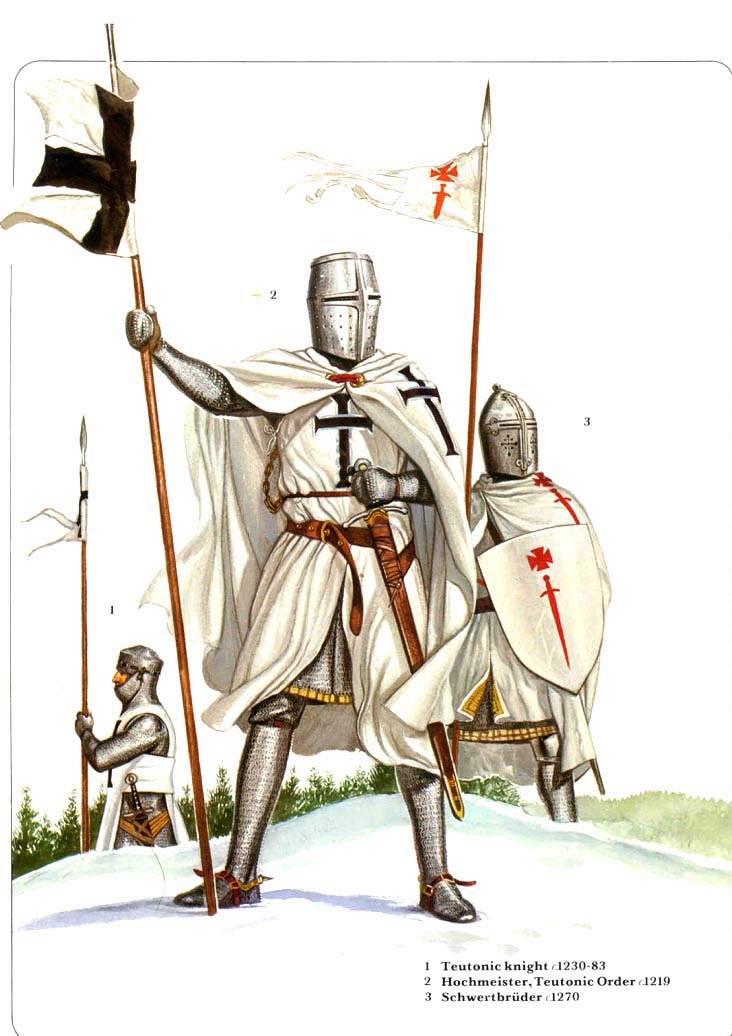
Perhaps the fact is that in Europe this order introduced the methods of war characteristic of Palestine. Opponents of the Crusaders in the Middle East and North Africa were "infidels" - people of an alien culture, even outwardly different from Europeans. The Islamic world, unlike the same, disconnected and constantly conflicting, pagan tribes of the Baltic States, had great potential power, was on the rise and pursued an active expansionist policy. The war with the Muslims was considered the holy duty of every knight and every Christian Sovereign - and in this war all methods were good. The new opponents of the Teutonic Order were, of course, also “alien”, but they were on other “steps”. Orthodox were considered schismatics - “strange”, not “very correct”, but still Christians. They could try one way or another to "convince" to recognize the power of the popes, at least through union. To fight with them under this pretext was a “God-pleasing” deed, but it was not forbidden to enter into military-political alliances to fight Muslim Turkey or someone from its Christian neighbors. Pagans, of course, were an adversary against whom moral norms did not act. And to kill ten people in order to “persuade” one hundred others to be baptized (“voluntarily and without coercion”, of course) was considered quite normal and acceptable. However, even the pagans were “better” than their own heretics, who, having received the baptism of the “true faith,” allowed themselves to doubt the authority of the ignorant priest of the local church, the sanctity of hypocritical monks, the piety of the tyrant-bishop, and the infallibility of the dissolute Roman pope. They read the forbidden Bible for the laity and interpreted its texts in their own way. They asked questions that really did not want to answer. It seems that: how many hands and feet should be with the saints, if you collect all the bones, exhibited in the churches? If the forgiveness of sins can be bought for money, then for money can you let them go and the devil? And in general, how many dads do you have? Still two? Or is now the 1408 year and in Pisa have already chosen the third? How can you believe in the church if the church is not God, after all? And then suddenly they began to say that Christ and His apostles had neither property nor secular power. The heretics were not only worse than pagans, but even Muslims are much worse and more dangerous. They were supposed to be destroyed according to the principle: “It is better that ten righteous men perish than save one heretic.” And God - he will understand in heaven, "alien" his faithful servants sent him, or "their". Teutons did not fight with Muslims and heretics in Europe, only against the Orthodox, pagans and even Catholics. However, they did not restructure: they behaved and fought in the same way as with the Saracens in Palestine (especially at first), which was somewhat shocking not only opponents, but also some allies.
However, perhaps everything is much simpler: the Teutonic Order lost, and his history if they didn’t write, the winners significantly edited them. Who, everywhere and always, precisely themselves declare "warriors of Light."
And a certain Mr. A. Hitler, who loves to talk about “Teutonic rage” and “Teutonic onslaught on the East,” also did not add popularity to this order.
It all began in 1143, when the first German hospital appeared in Jerusalem, which received orders from the Pope of Rome to submit to the Hospital of St. John. In November, 1190, during the siege of Acre (III Crusade), the nameless merchants from Lübeck and Bremen founded a new field hospital for German soldiers. The Duke Friedrich of Swabian (the son of Friedrich Barbarossa) formed on his basis a spiritual order, at the head of which Chaplain Conrad was appointed. Already 6 February 1191, Pope Clement III approved the foundation of the new order, and in December 1196, another pope, Celestine III, approved it as a spiritual knight. This was an important event in the life of the Christian states of Palestine, entering the last century of its history. The masters of hospitallers and templar, many secular knights and clergymen attended the ceremony of reorganization of the order. Its official name now was: “The Order of the Brothers of the Hospital of St. Mary of the German House in Jerusalem” (Ordo domus Sanctae Mariae Teutonicorum in Jerusalem). From this time on, the order has its own army and military functions become essential for it. At the same time, the order was granted a privilege, freeing him from the power of the bishops and allowing him to choose his own master.
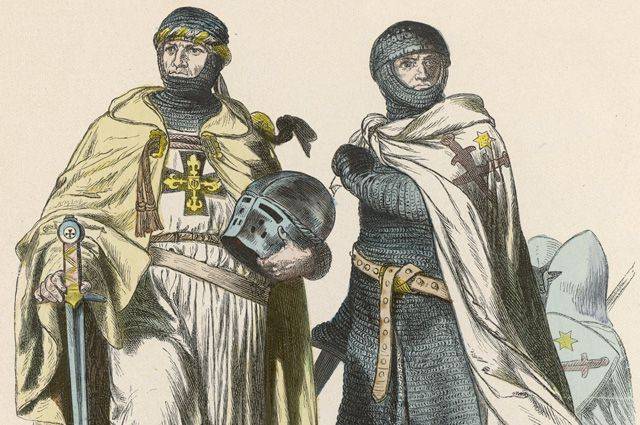
Pope Innocent III in the February 19 bullet 1199 defined the following tasks of the new order: the protection of German knights, the treatment of the sick, the struggle against the enemies of the Catholic Church. The motto of the order: "Help - Protect - Heal."
Unlike the Templars and the Hospitallers, who submitted only to the Pope, the Teutonic Order was also subject to the emperor of the Holy Roman Empire.
According to the statute of the order, its members were obliged to observe the vow of celibacy, unconditionally obey their elders and not have personal property. That is, they were actually prescribed a monastic way of life. In this regard, let us return to the famous Teutonic nickname - “Knight Dogs”: they are so called only in the territories of the former USSR republics and the reason for this is the incorrect translation into Russian of one of the works of Karl Marx, who used the noun “monk” in relation to Teutonic German language close to the word "dog". "Monk Knights" called them Karl Marx! Not dogs, nor dogs and dogs. But will anyone dissuade you now? And somehow it is not good - to drown monks in the lake. Here “dogs” is another thing altogether! Is not it?
But back to Palestine. The residence of the head of the order (grandmaster) became Akra. His deputies and closest assistants were the five gross-headers (the Great Lords), the main one being the Great Commander. The High Marshal was responsible for the training of troops and their management. The other three are the High Hospitaller, Quartermaster and Treasurer. Knight, appointed to manage one of the provinces, received the title of Land Commander. The commander of the garrison of the fortress was called Castellan. All these posts were elected.
A knight was accompanied by several servants of armor-bearers with marching horses — they did not participate in battles. The warhorse was used only during the battle, the rest of the horses were needed mainly as pack animals: during the march, the knights, like the rest of the warriors, walked. To mount a horse and put on armor was possible only on the orders of the commander.
As the name suggests (Teutonicorum - translated into Russian “German”), the members of the order came from Germany, initially they were divided into two classes: knights and clerics.
A third class soon appeared: the serving brothers — some of them came from religious convictions, but many simply performed certain duties for a fee.
The most famous and recognizable symbol of the order - the black cross on a white cloak, was the emblem of the knights brothers. The remaining members of the order (including the Turkopoller - the commander of the mercenary detachments) wore gray cloaks.
Like its “elder brothers”, the Teutonic Order quickly acquired lands (Komturii) outside Palestine: in Livonia, Apulia, Austria, Germany, Greece, Armenia. This was all the more useful since the affairs of the Crusaders in the Holy Land were getting worse. As a result, without waiting for the final collapse, the Teutons, taking advantage of the invitation of Count Boppo von Wertheim, the main forces of the order relocated to Bavaria (the city of Eschenbach). But part of the "brothers" still remained in Palestine, in 1217-1221. they took part in the V Crusade - to Egypt.
In 1211, the Teutons were invited to Hungary — to defend Transylvania from the Polovtsy.
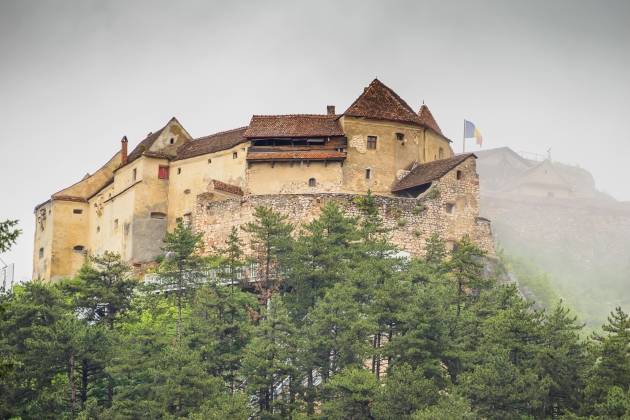
But already in 1225, King Andras II, suspecting the Teutons in an attempt to create on the territory of Hungary their own, vassal to the Pope, the state, drove them out of the country.
It would seem that this ugly story should have been a lesson for other European rulers, but already in 1226, the city of Konrad Mazowiecki (Polish prince from the Piast dynasty) invited the Order to fight the pagan tribes of the Baltic states, first of all the Prussians.
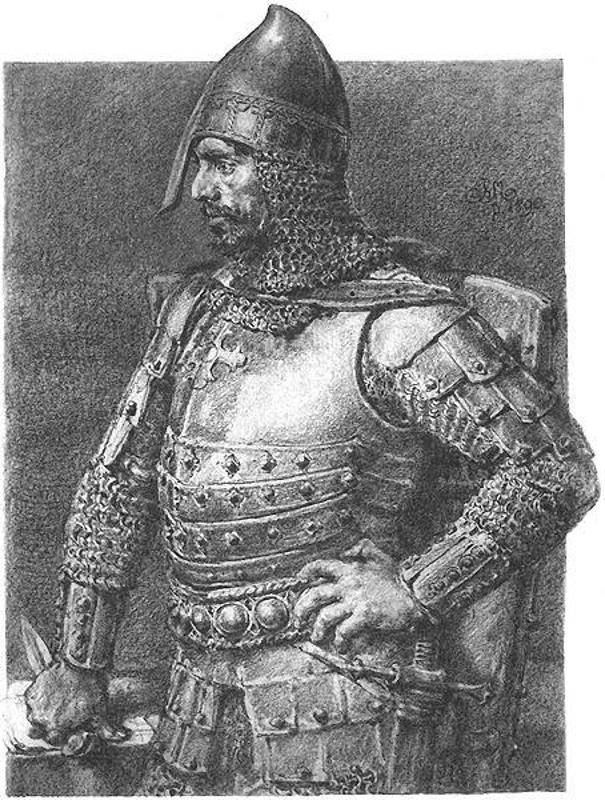
He even gave them the Kulma (Chelmen) and Dobzhinsky (Dobrynska) lands with the right to expand their possessions at the expense of the conquered lands. The right to seize Prussian and Lithuanian lands in 1234 was confirmed by Pope Gregory IX, and later by the German emperors Frederick II and Ludwig IV. Frederick II granted the Grand Masters title and rights of the Elector. And in 1228, the Order begins the conquest of Prussia. But the headquarters of the Teutons is still in Palestine - in the castle of Montfort.
And in 1230, the first Teutonic castle (Neshawa) appears on Kulma land. Further, Velun, Kandau, Durben, Velau, Tilsit, Ragnit, Georgenburg, Marienwerder, Barga and Konigsberg were built. A total of 40 castles were built, some of them (Elbing, Königsberg, Kulm, Thorn) formed German cities that became members of the Hanseatic League.
Meanwhile, back in 1202, in the Baltics, “his own” appeared, the local knightly Order - the Brotherhood of Knights of Christ of Livonia, better known as the Order of the Sword.
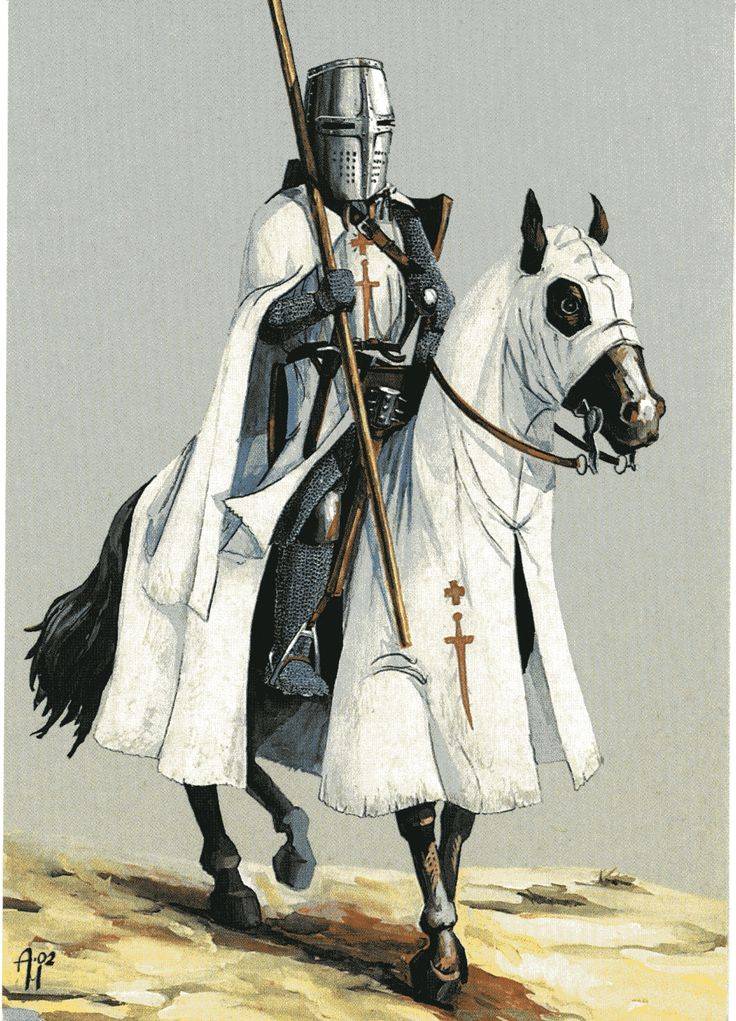
Mr Velikiy Novgorod didn’t like new neighbors trying to subjugate the tribes who paid tribute to Novgorod. As a result, already in 1203, Novgorod will organize the first campaign against the Sword. Total from 1203 to 1234. such campaigns Novgorod made 8. In 1234, the great victory over the Order was won by the father of Alexander Nevsky - Prince Yaroslav.
It seems it would be logical if the Novgorod bogatyr Vasily Buslaev had a fight with the swordmen. But, no, Vaska ignores them, on the contrary, he goes to Jerusalem himself and perishes along the way. In Russian epics, the swordmen have a different, much more eminent and “status” opponent. In one version of the epic "On the three trips of Ilya of Murom" there are such lines:
In the hoods black people -
Crow covers,
Hoodie long -
Know the monks is all al priests!
Persuade the knight
Throw Russian Orthodox law.
For treason
All promise sulu great,
And honor, and respect ... "
After the failure of the hero:
Hoodies are thrown off -
Not monks, black
Not priests dolgopoliki,
Latin warriors are standing -
Sword Giants. "
But one should not think that the Russians and the Swordsmen only fought among themselves. Sometimes, they acted as allies. So, in 1228, Pskov concluded an alliance with the Order against Novgorod encroaching on its independence - and the Novgorodians retreated.
In 1236, the swordtails made a rash decision to start a war against Lithuania. Knights from Saxony (“guests of the Order”) and 200 soldiers from Pskov came to their aid:
("The Livonian Rhyming Chronicle.")
22 September 1236. Allies suffered a crushing defeat against the Lithuanians in the battle of Saul (Siauliai). The master of the Order of the Swordsmen, Falkin Schönke von Winterstern, Count Heinrich von Danenberg, Mr. Theodorich von Namburg and another 48 order knight were killed. Great losses suffered Saxons and Pskov. In the First Novgorod Chronicle it is reported that from 200 warriors sent by Pskov to the “Germans for help” “to the godless Lithuania” “came ten of them to their own houses”. After this defeat, the Brotherhood was on the verge of death, it was saved by its accession to the Teutonic Order, whose landmaster’s name, under the name of the Livonian Order, becomes. 54 Teutonic knights "changed registration", compensating for the losses suffered by the swordmen.
In 1242, the famous Battle of Lake Peipsi took place - already with the Livonian knights, and not with the swordsmen. Livonian allies were the Danes.
“Ice Battle” is known to all, but the scale of this battle is traditionally exaggerated. A much larger and significant battle took place in February of 1268 under Rakovar (Estonian Rakvere). The chronicle states:
The combined Russian army of Pskov Prince Dovmont, Novgorod posadnik Michael and son of Alexander Nevsky Dmitry overturned the allied forces of the Livonian Order and the Danes and drove them 7 versts. The losses of the parties were really serious, numbered by thousands of professional soldiers, which by the standards of the XIII century is very noticeable.
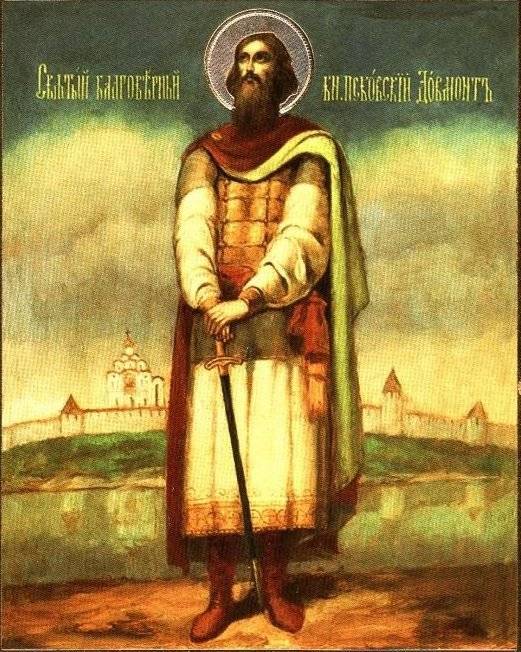
But in general, in Europe, despite some defeats, the Order of the Order is going well. In 1244, the most important event in the history of the Order takes place - the Pope recognizes his state in Europe. In 1283, the Teutons complete the conquest of Prussia (Borussia) - despite the uprisings of 1242-1249 and 1260-1274. In 1308-1309. The Order takes possession of Eastern Pomerania and Danzig. In Palestine, at that time everything is very bad: in 1271, the Mamelukes seize Montfort, in 1291 - the Crusaders lose Acre, and the Teutonic Order transfers its headquarters to Venice. In the 1309 year, when the Order is completely comfortable in the Baltic States, the grandmaster will move to Marienburg - the residence of the great masters this castle will remain until 1466.
At the end of the XIII century, the Order came into conflict with the Archbishop of Riga, as a result of which he was even excommunicated in 1311. But then everything was decided by the world and the removal of the weaning in the next year, 1312. In 1330, the opposition of the Teutons and the Archbishop ended with the victory of the Order, who became the lord of Riga. At the same time there was an exchange of territories between the Teutonic Order and its Livonian Landmaister: In 1328, the Livonian Order handed over to the Teutonic Memel and its environs. And at 1346, the Teutons bought Northern Estonia from Denmark and, in turn, transferred it to the Livonian Order.
Meanwhile, at that time, a curious tradition appeared in Europe - “Prussian travels”: knights from different states, including those from the most distinguished aristocratic families, came to Prussia to take part in the war against pagan Lithuania. These "tourist trips to the war" became so popular that sometimes the Order only gave the "guests" guides and commander, giving them the opportunity to fight with the Lithuanians themselves. Grand Master Karl von Trier (who took office in 1311) began to pursue a peace-loving policy so outraged European chivalry that in 1317 he was removed from the position at the Chapter meeting. Even the intercession of the pope did not help.
One of the "guests" of the Teutonic Order was Henry Bolingbroke, Earl of Derby, son of the famous John Gaunt. 19 July 1390. He arrived in Danzig on his own ship with a detachment of 150 people, accompanied by 11 knights and 11 squires.
In the “Torun Annals” it says:
In 1392, Henry sailed to Prussia again, but there was no war, and therefore, accompanied by 50, he set off through Prague and Vienna to Venice. In 1399, John Gaunt died and King Richard II confiscated the family possessions of his family. Outraged, Henry returned to England, revolted and captured the king (August 19 1399). In the parliament that assembled on September 30, he declared his claims to the throne. His arguments were adorable:
First of all, high origin is an argument, frankly, not very, but it is so - on the seed.
Secondly, the right to conquer is serious, this is grown-up.
And finally, in the third - the need for reform. The magic phrase, having heard that the current presidents (and other heads of state) understand that the Anglo-Saxons need something very much in their country. And if they don’t give up this “something” immediately, they will be beaten (perhaps even with their feet). On the territory of England, magic seems to have worked already at the end of the 14th century. Richard II quickly abdicated the throne and was so kind that very soon (February 14 1400) died in the castle Pontekraft - at the age of 33 years. And our hero 13 in October 1399 was crowned as Henry IV, King of England. He became the founder of the Lancaster dynasty and rules until 1413.
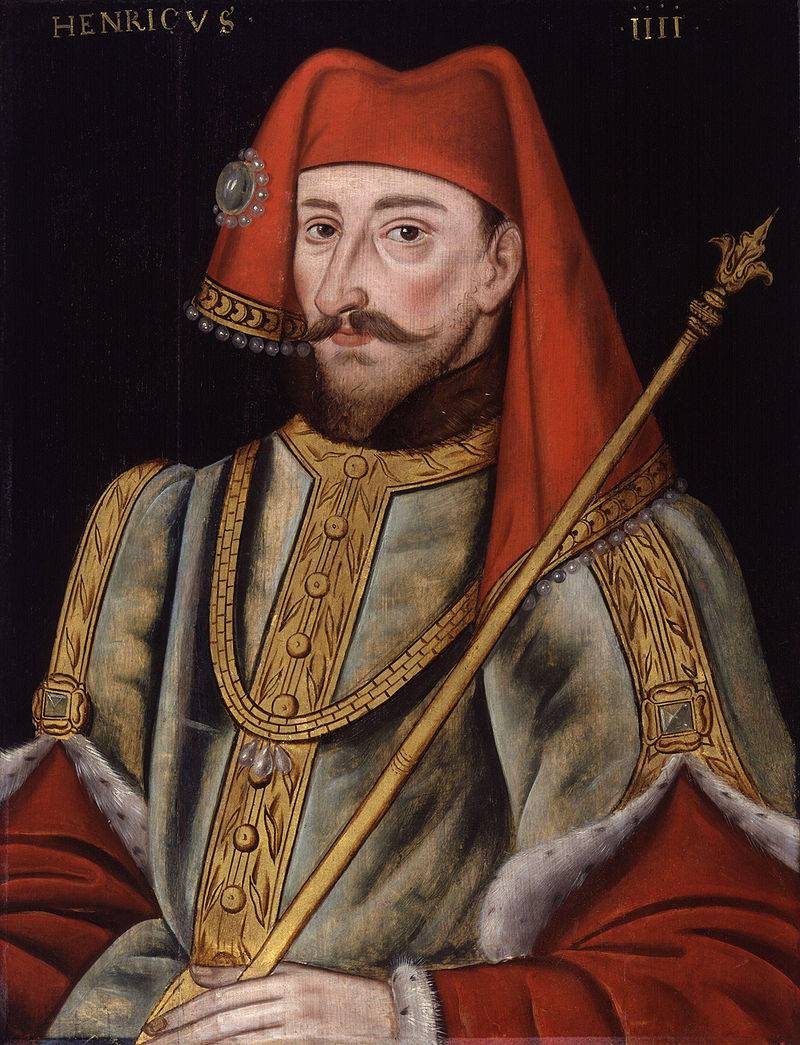
In 1343, the Order returned to Poland the occupied lands (with the exception of Pomorye - the Kalisz Treaty) and concentrated all its forces on the struggle against Lithuania. In total XIV century, the Teutons made about 70 major trips to Lithuania from Prussia and around 30 - from Livonia. And in 1360-1380. major trips to Lithuania were made annually. In 1362, the Order's army destroyed the Kaunas castle, in 1365, the Teutonic people first attacked Vilnius. The Lithuanians, in turn, in 1345-1377. made about 40 retaliatory campaigns. In 1386, the Grand Duke of Lithuania Jagiello adopted Catholicism and was proclaimed by the Polish king under the name of Vladislav II (the foundation of the Jagiellonian dynasty, which will rule in Poland until 1572). After the baptism of Lithuania, the Teutons lost formal grounds for attacks. But the reason for the war did not go away: the емemaitija and the western Aukshaytiya, which belonged to Lithuania, separated the possessions of the Teutonic Order from its Livonian landmaister (Livonian Order). And the Grand Duke of Lithuania Vitovt at that time had big problems: his rival, Prince Svidrigailo, could not calm down, and the Tatars were constantly worried about the south-eastern frontiers, and the Polish queen Jadwig suddenly demanded payments from the Lithuanian lands donated to her by Yagaila . The latter’s claims particularly angered the Lithuanians, who, at a specially assembled council, decided to inform the queen that, as honest and decent people, they can only wish her “better health and a good mood”. And all the rest - let him with her husband demands. Under these conditions, Vitovt was forced to conclude with the Order of the Salinsky Treaty (1398), according to which, in exchange for support, he ceded the Order of the Land to Nevezis. It was a territory with a very significant pagan influence, which Vitovt himself practically did not control. As a result, in 1399, the Teutonic Order even made an ally of Lithuania in the Battle of Vorskla (a rather strange alliance of Prince Vitovt, Khan Tokhtamysh and Teutons).
This battle was one of the largest and bloodiest in the XIV century, and ended with a heavy defeat for the Allies.
In 1401, the uprising of the Samogitians forced the Order to leave this province, after which its attacks on Lithuania were resumed. In 1403, Pope Boniface IX officially forbade the Teutons to fight with Lithuania. As a compromise in 1404, the Order received that same Samogitia under joint management with Poland and Lithuania (the rationing treaty). The idyll ended in 1409 with an uprising of the Samogitians dissatisfied with the Order of the Order, whom the Lithuanians came to their aid. Thus began the decisive war of Poland and the Lithuanian principality against the Teutonic Order, which culminated in the catastrophic defeat of the latter in the battle of Grunwald (Tanenberg).
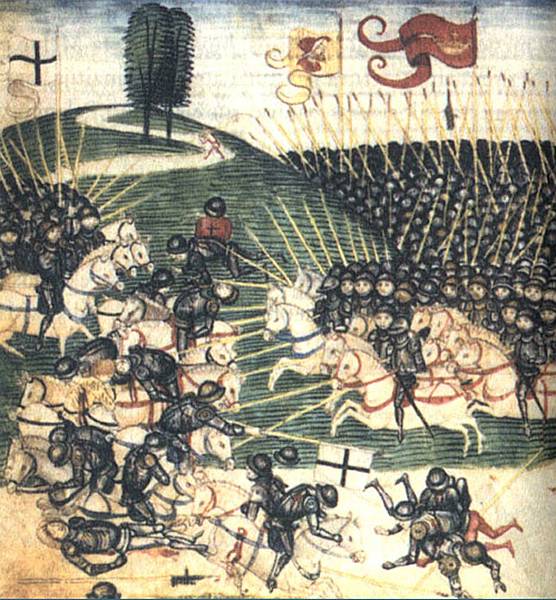
The Allied Army was impressive: the troops of the Polish king Jagiello, the Grand Duke of Lithuania Vitovt, the “banner” from Smolensk, Polotsk, Galich, Kiev, the Czech army led by Jan ижižka, who was yet to become great during the Hussite Wars, and detachment of the Tatar cavalry (about 3 000 people). Including auxiliary troops and wagon train, the number of this army reached 100 thousands of people. On the right flank stood Russian-Lithuanian troops and Tatars (40 khorugvy) under the command of Vitovt. On the left - the Poles, commanded by the commander Zyndram (50 banners). Artillery was distributed around the front. Part of the infantry units covered transports. To raise the morale of the army, before the start of the battle, King Jagiello knighted several dozen people before the formation.
The troops of the Teutonic Order consisted of representatives of 22 countries of Western Europe (51 "flag") and numbered about 85 thousands of people. The number of members of the Order is historians estimate in 11 thousands of people, 4 thousands of them were crossbowmen. The commander in chief was Master Ulrich von Jöngingen.
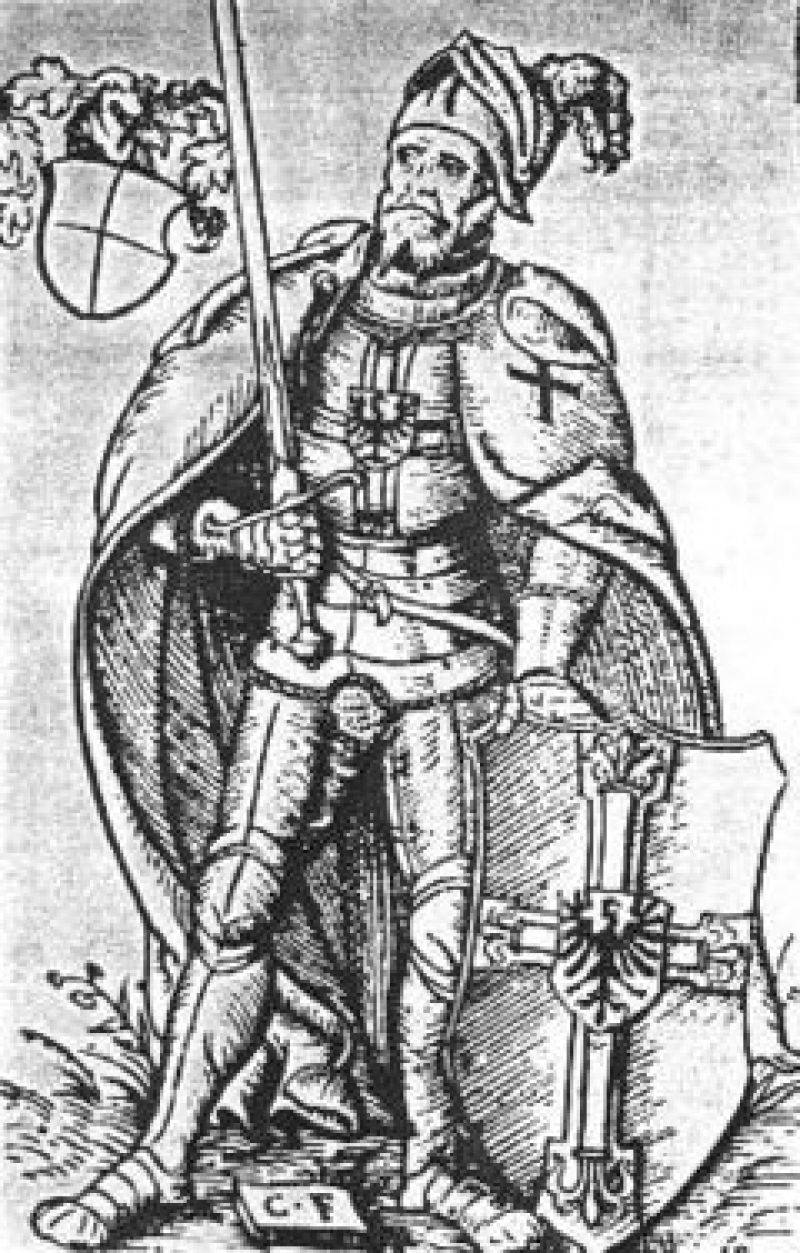
The artillery Ulrich von Jungingen positioned ahead of the battle formations, the bulk of the infantry was stationed in a wagenburg (a fortification of carts) - behind the deployed positions of heavy cavalry and artillery of the order.
15 July 1410. The army of opponents rose between the villages of Tannenberg and Grunwald. The Grand Master sent to Yagailo and Vitovt heralds with a provocative message, which said:
The Crusaders, indeed, moved back. According to the views of those years, it was a challenge bordering on an insult. And the allies began the battle. The first moved troops Vitovt. This is where the discrepancies begin: some historians claim that the attack of Vitovt’s light cavalry and Tatar cavalry was initially successful: they allegedly managed to chop up the order artillerymen. The Polish chronicler Dlugosh claims the opposite: the cavalry attacking the Teutons fell into pre-arranged traps (“holes covered with earth so that people and horses would fall in them”). During this attack, Podolsky Prince Ivan Zhedevid died, "and many more people suffered great damage from those pits." After that, detachments of “guests” moved against the Lithuanians - knights of other countries who wished to fight with the “pagans”. About an hour later, the Allied left wing began to "retreat and finally fled ... The enemies chopped up and captured the fleeing, chasing them many miles away ... But the runners were seized with such fear that most of them stopped their flight, only reaching Lithuania "(Dlugosh). The Tatar cavalry also fled. Many modern historians consider this evidence of Dlugosh as too categorical. Knightly cavalry could not develop success, as it fell into swampy rugged terrain. Low appreciating the actions of the Lithuanian army as a whole, Dlugosh opposes them the actions of three Smolensk regiments:
This was of great importance for the course of the whole battle, since the Smolensk regiments adjoined the Polish army on the right, and, holding the position, did not allow the knightly cavalry to strike the flank.
Only now the Teutons and the Prussian militia engaged in battle with the Poles, striking them "from a higher place" (Dlugosh). Success, it seemed, accompanied the soldiers of the Order, they even managed to seize the royal banner. At that moment, already confident of victory, the grand master threw the last reserves into battle, but the reserve units were used by the allies, moreover, part of the Vitovt army suddenly returned to the battlefield. And now the decisive role played a numerical advantage. Army of the Order managed to bypass from the left flank and surround. In the last phase of the battle, the great master, the great commander, the great marshal and the 600 knights were killed. Of the commanders, only one survived - not taking part in the battle. About 15 000 people were taken prisoner. Carts, artillery, battle flags of the crusaders were captured (51 was sent to Krakow, the rest - to Vilnius).
I The Treaty of Toruń (1411) was rather mild towards the losing side, but the Teutons were forced to return to Lithuania Samogitia and Zanemanye. The Teutonic Order, which at some point was in the position of the strongest in Europe (the Order of the Templars was treacherously crushed and banned, and the hospitallers did not have such a resource base as the Teutons, who collected taxes from numerous lands and even monopolized the trade in amber ) from this blow has not recovered. The Teutons lost the strategic initiative, and now they could only defend themselves, trying to defend their possessions. In 1429, the Order still helps Hungary repel the attack of the Turks. But the subsequent unsuccessful wars with Lithuania (1414, 1422), with Poland and the Czech Republic (1431-1433) have aggravated the crisis of the Order.
In 1440, the Order of Prussian Union was formed in opposition to the Order - the organization of secular knights and citizens. In February 1454, this alliance rebelled and announced that all Prussian lands would henceforth be under the auspices of the Polish king Casimir. The thirteen-year war of the Order with Poland, which followed then, ended in another defeat of the Teutons. Now the Order has lost Eastern Pomerania and Danzig, Kulma land, Marienburg, Elbing, Warmia, which were ceded to Poland. From the lost forever Marienburg (which became Polish Malbork) the capital was moved to Konigsberg. This defeat could be fatal if the Lithuanians also hit the Order, but for some reason they remained neutral. The authority of the Teutonians is steadily declining, and in 1452, the Order loses its sole authority over Riga - now it was forced to share it with the archbishop. And in 1466, the autonomy of the Livonian Order is granted. In 1470, the master Heinrich von Richtenberg was forced to take a vassal oath to the King of Poland. Attempt to regain independence in 1521-1522. not a success.
In 1502, the army of the Order won the last victory over the Russian army, but in 1503, the war ended in favor of Moscow. And in 1525, an event occurred that shook the whole of Europe: the grandmaster of the Catholic Order, Albrecht Hohenzollern, and part of the knights accepted Lutheranism. The Teutonic Order was abolished, its territory was declared the hereditary principality of Prussia, vassal, in relation to Poland. From the hands of the Polish king Sigismund, Albrecht received the title of duke. After that, he married the Danish princess Dorothea.
But some of the knights remained faithful to the old faith, in 1527 they chose a new grandmaster - Walter von Kronberg. The emperor of the Holy Roman Empire approved this assignment, the Teutonic knights who left Prussia fought against Lutherans in religious wars. In 1809, the Teutonic Order was dissolved by Napoleon Bonaparte, but in 1840 it was again revived in Austria.
As for the Livonian Order, it was abolished during the Livonian War. His last master, Gothard Kettler, followed the example of the Teutonic grandmaster: in 1561, he accepted Lutheranism and became the first Duke of Courland.
The Duchess of Courland was the niece of Peter I - Anna Ioannovna, who ascended to the Russian throne in 1730. And the last duke of Courland was Peter Biron - the son of her favorite, Ernst Johann Biron.
28 March 1795. He was called to St. Petersburg, where he signed a renunciation of the duchy. The annual pension in 100 of thousands of thalers (50 of thousands of chervonets) and 500 of 000 of chervonets as a payment for estates in Kurland became a compensation. He spent the rest of his life in Germany.
In 1701, the great Elector of Brandenburg and the Duke of Prussia, Friedrich Wilhelm, proclaimed himself to be still “king in Prussia” - the fact is, the western part of Prussia then still belonged to Poland. In 1722, the city of Frederick II, during the first partition of Poland, annexed these lands to his state and became the “king of Prussia”. In 1871, the last Prussian king, Wilhelm I Hohenzollern, became the first emperor of the 2nd German Reich.
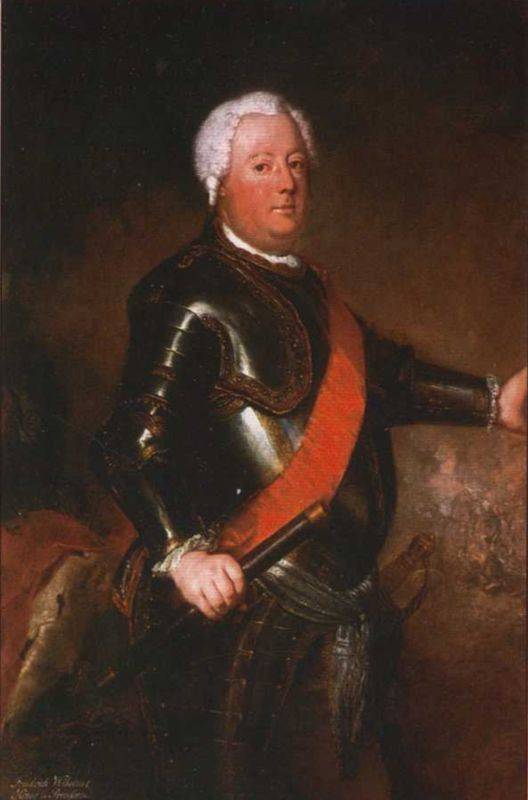
The leaders of the Third Reich in 1933 declared themselves to be "spiritual heirs" of the Teutonic Order. After the defeat in World War II unleashed by them, these “heirs” ceased to exist.
But purely formally, the Teutonic Order still exists on the territory of Austria today. True, only a loud name remains of him: the head is now not the great master, but the abbot-Hochmeister, and the order in the castrated order of the winners is not militant, the knights are always ready for battle, but almost only women (sisters) working in hospitals Austria and Germany.
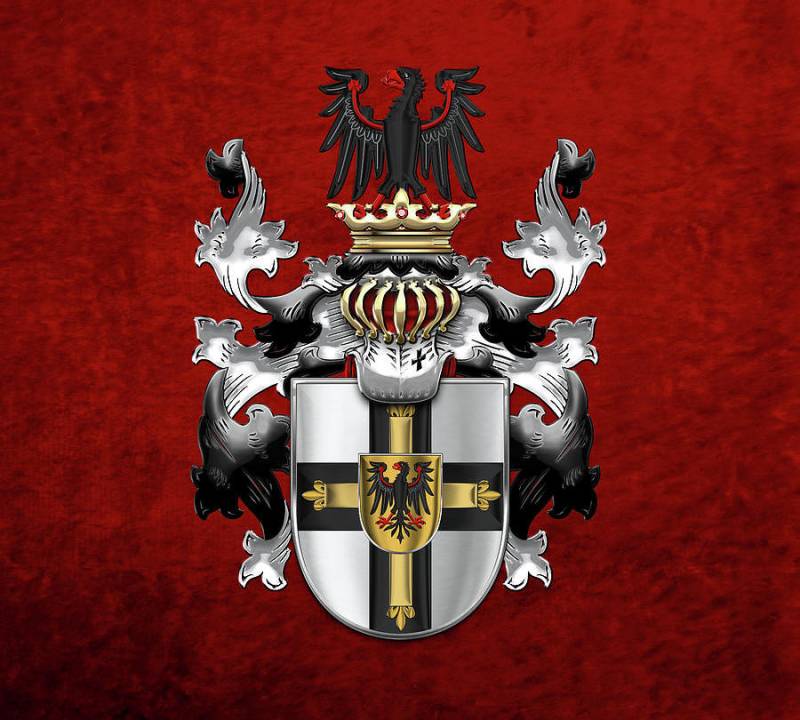
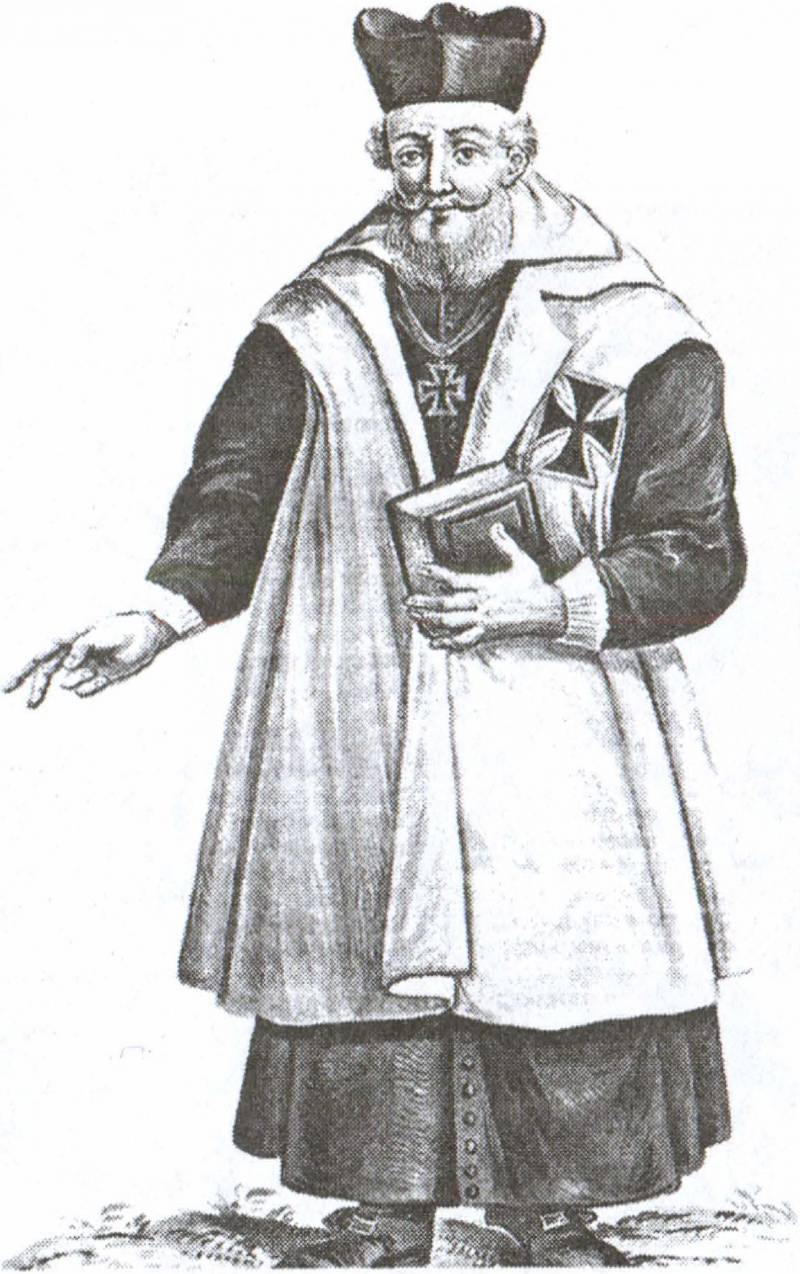
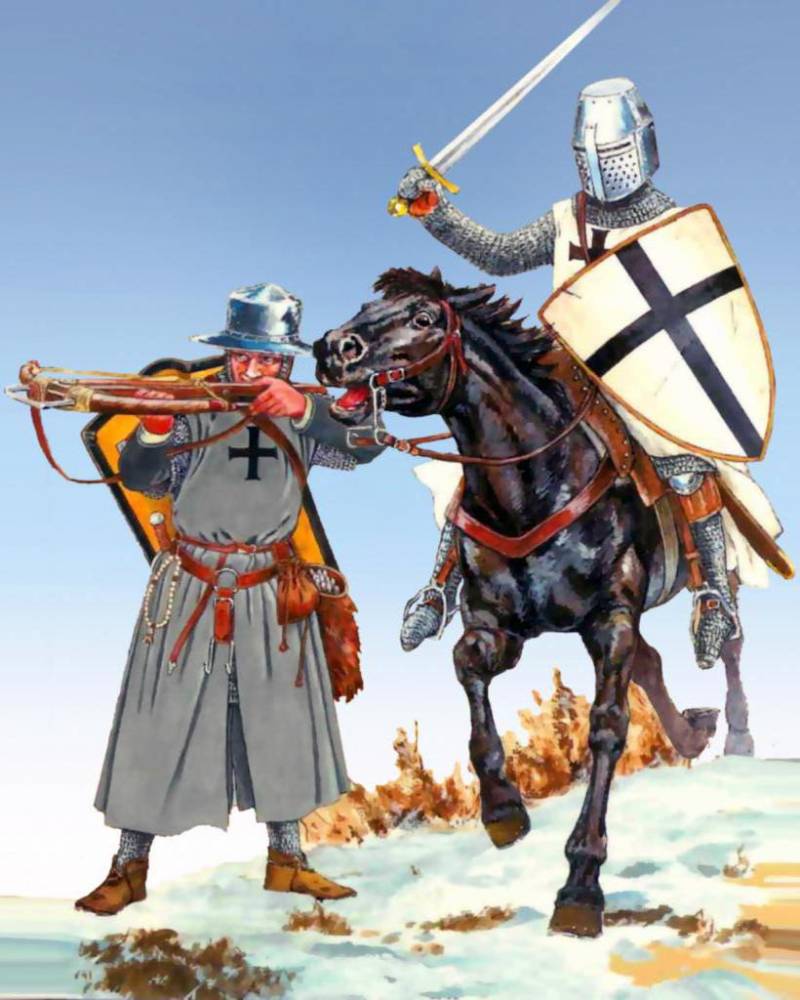
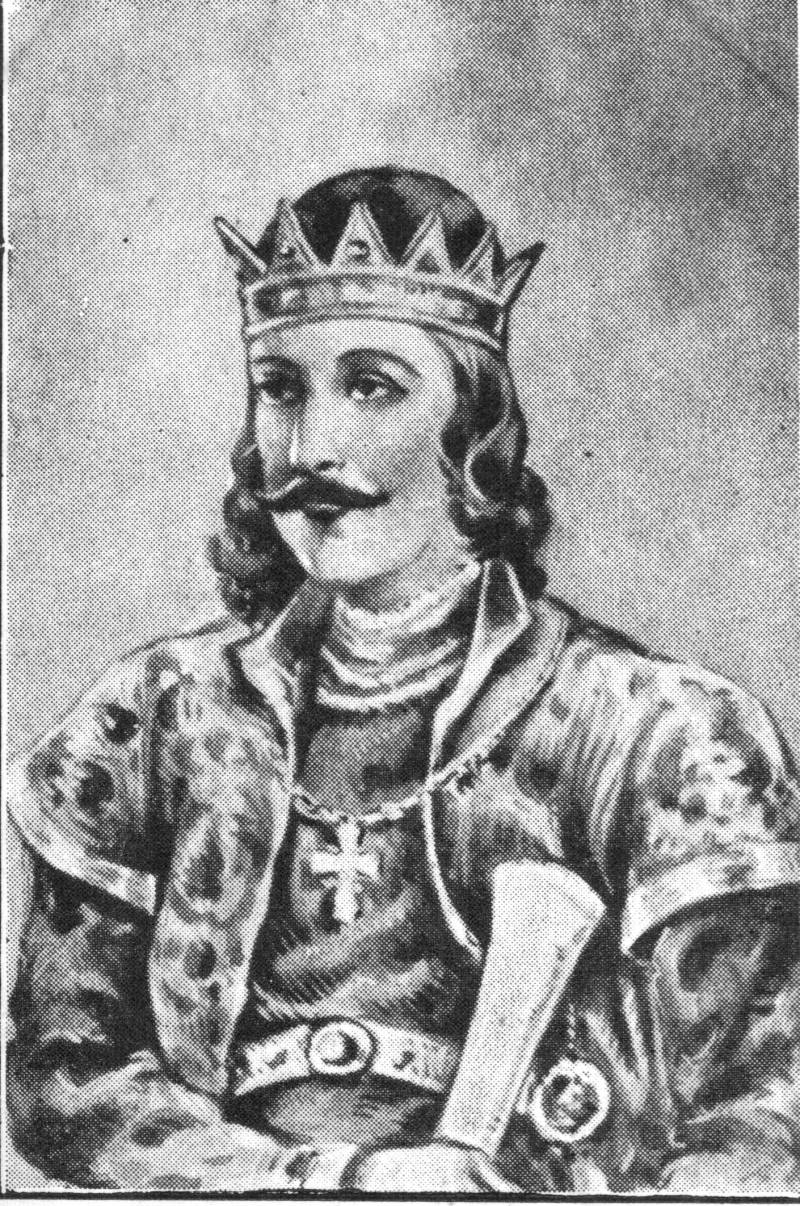
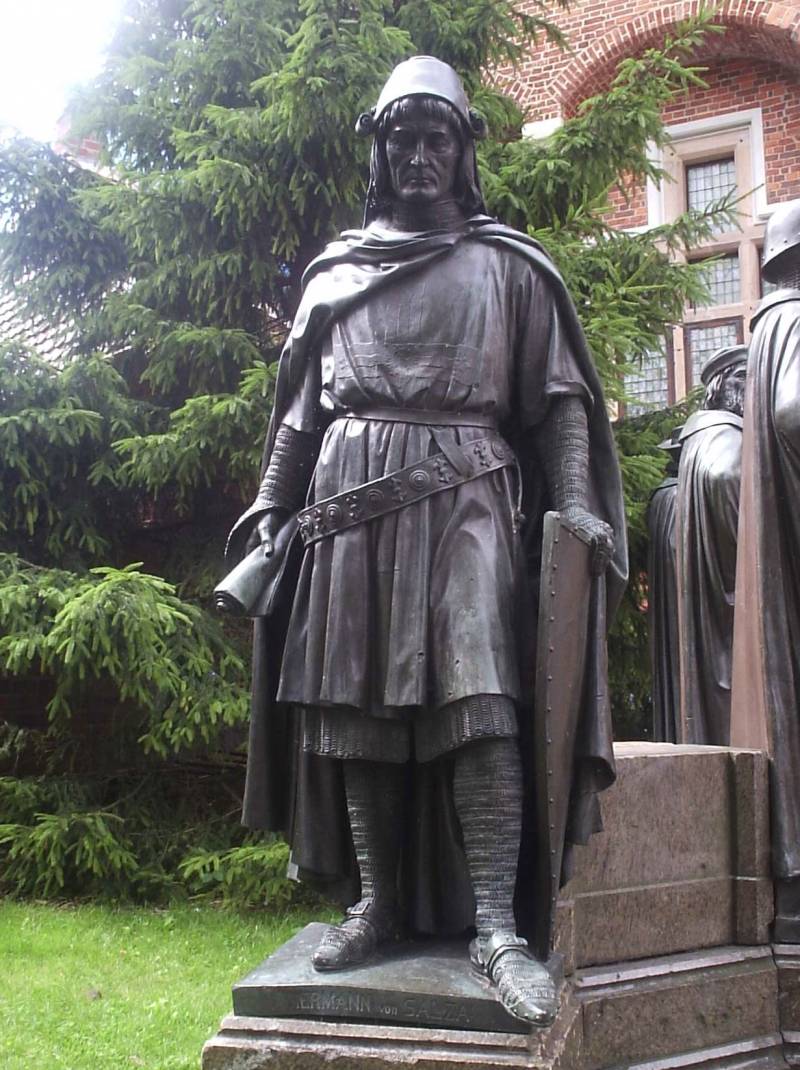
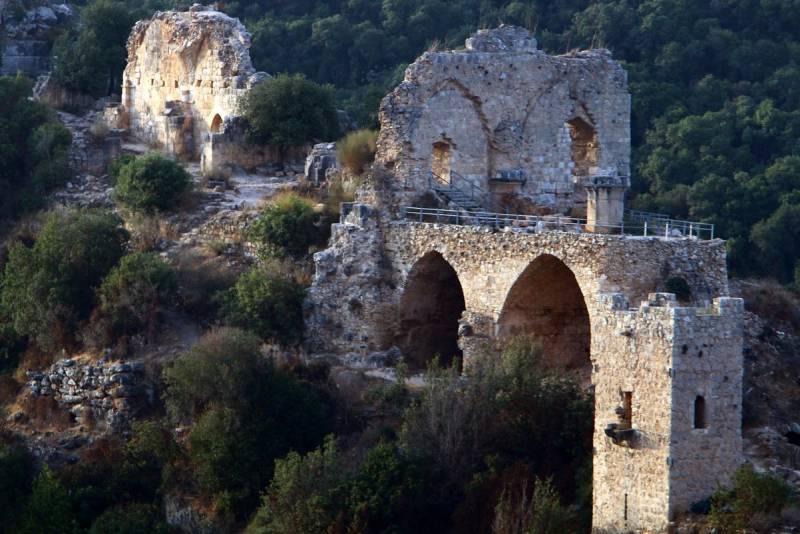
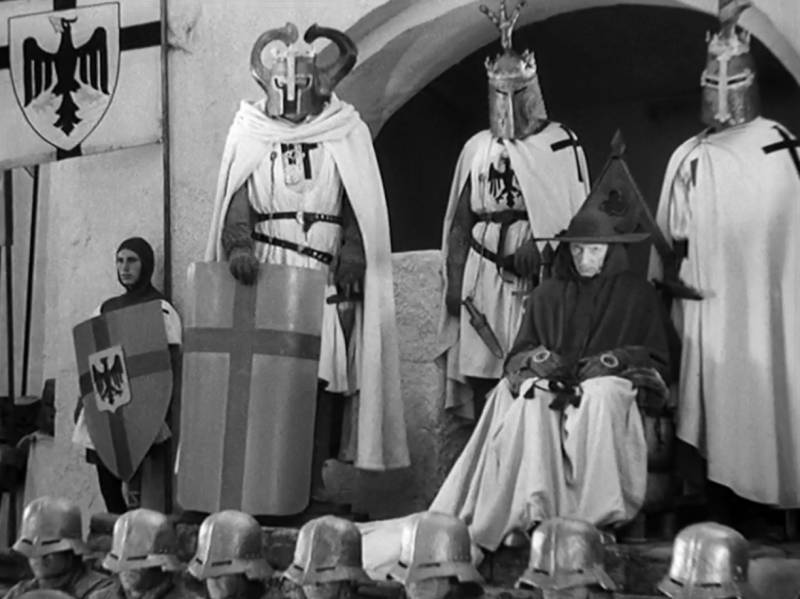
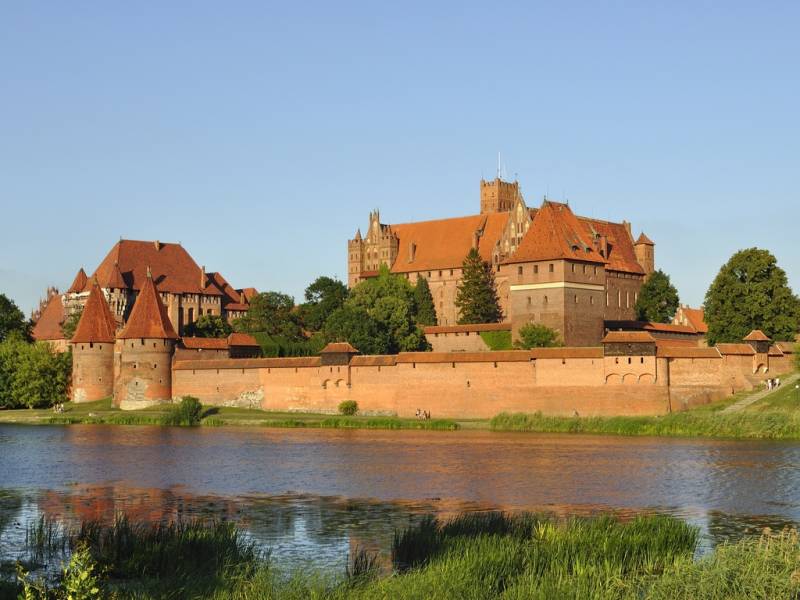
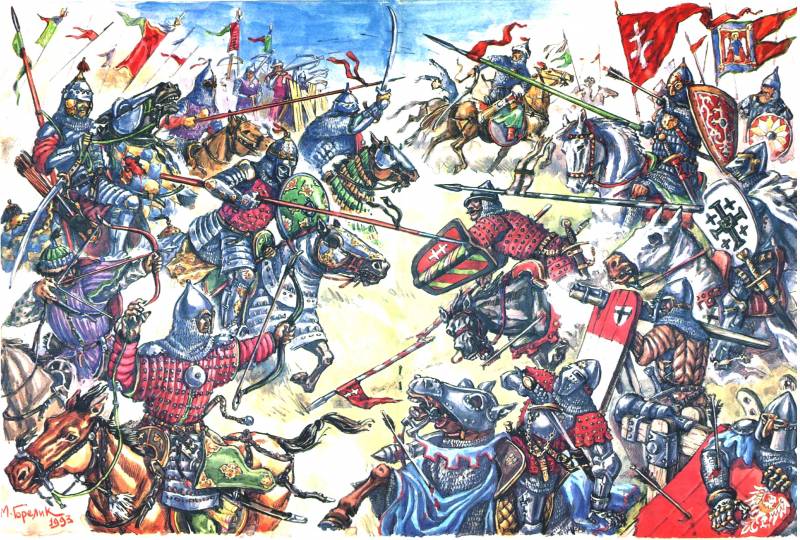
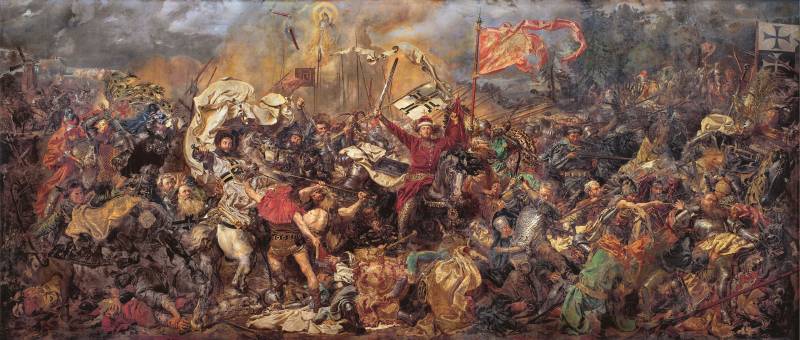
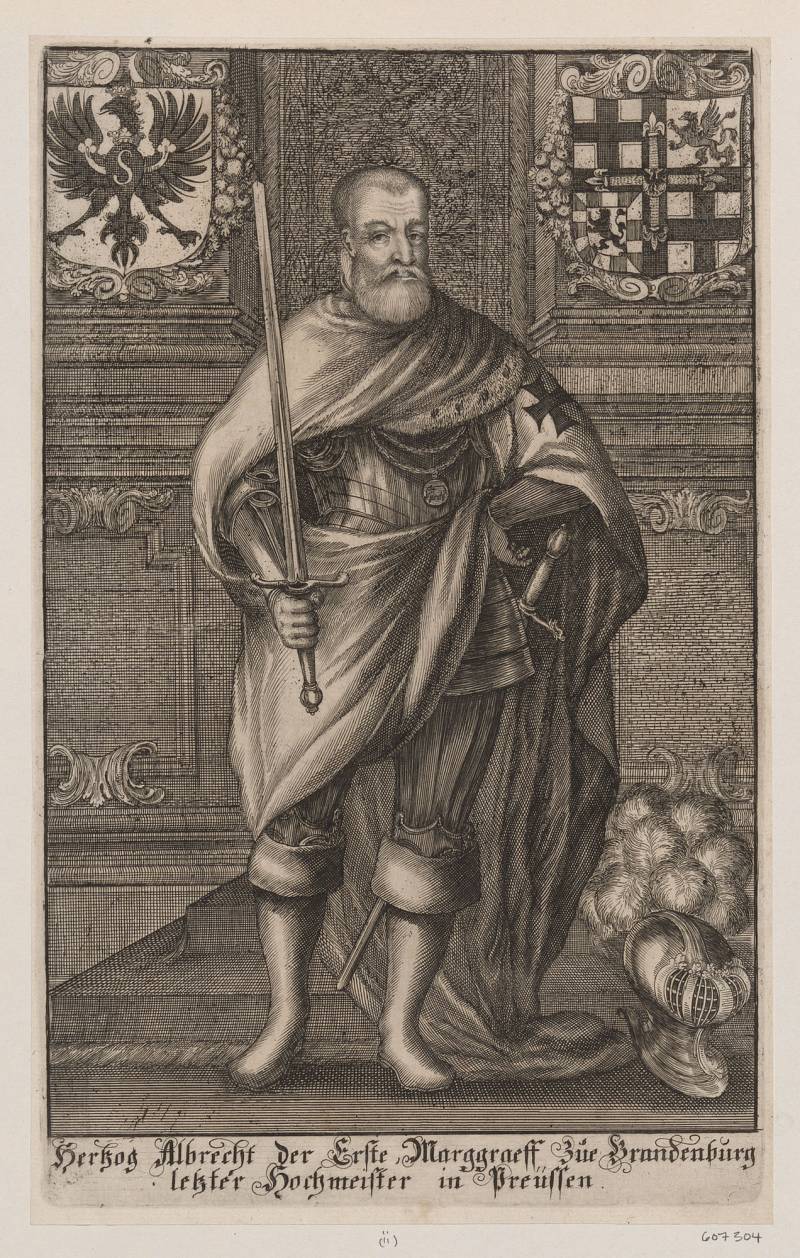
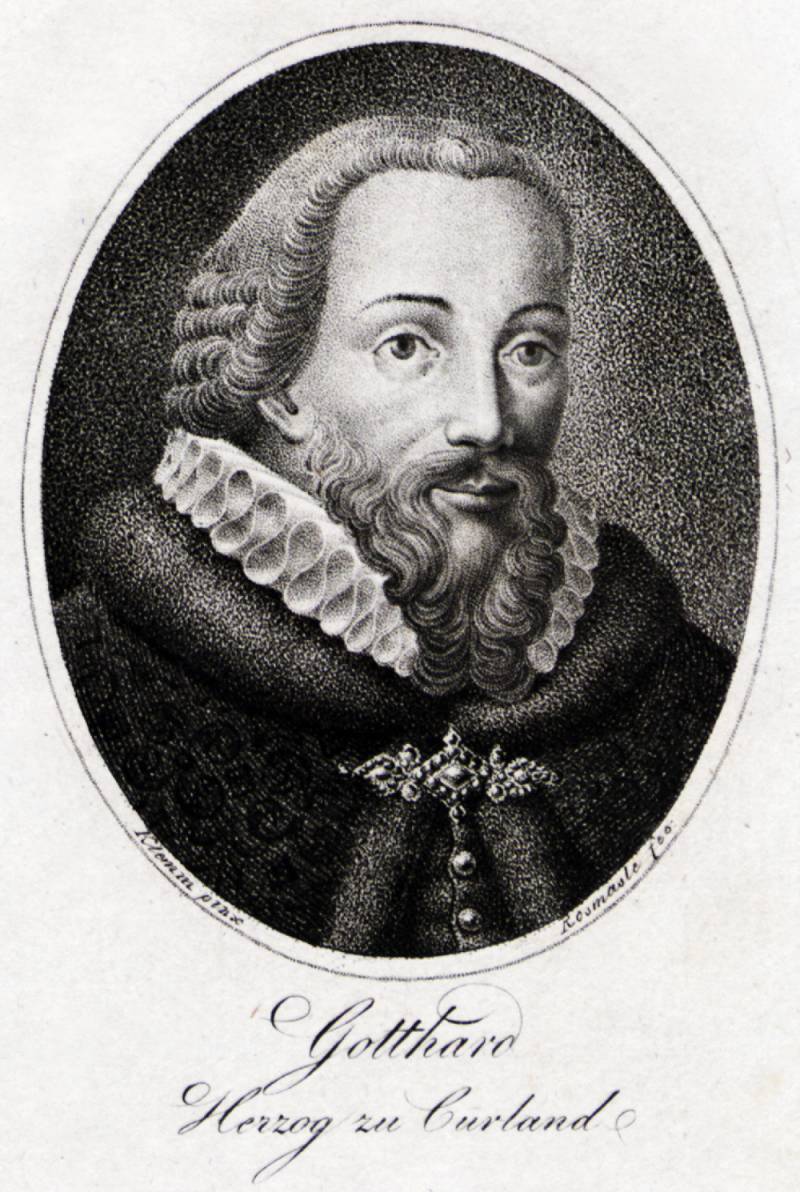
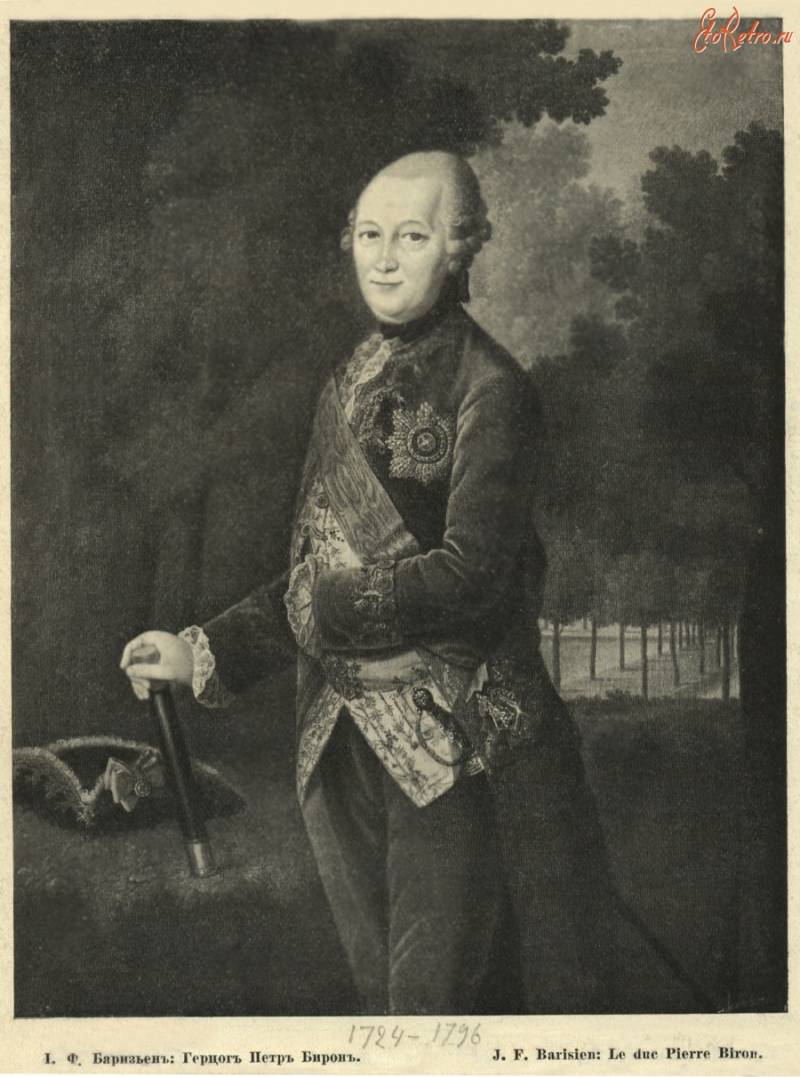
Information